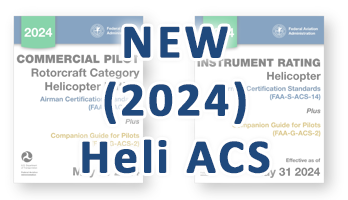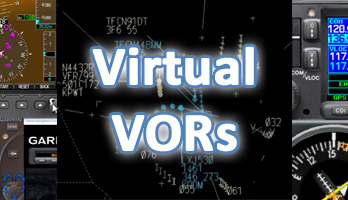This is the thirty first training flight in a series following a student through his flight training from day 1 to checkride in an R22.
A ‘stage check’ is the last step before a checkride (assuming it goes well) and is usually performed by an senior instructor, other than the student’s usual instructor. So the purpose of a ‘mock’ stage check is for the student experience their usual instructor in more in a testing than teaching mode to help prepare for the eventual stage check and identify any weaknesses.
Some highlights of this lesson:
- Pinnacle off airport approaches
- OGE hover check technique
- 180° autorotations
- Steep approach
- Max performance takeoff
- Hover auto
NOTES/TIPS:
00:20 power check – high temps, DA and max gross weight = limited performance
00:45 use taxiway to expideite departure/arrivial if safe to do so
01:00 check for landing/final traffic
02:10 giving an artificial manifold pressure limit to simulate the need for a running landing (unable to hover due to limited engine performance)
04:10 running landing
09:10 straight in autorotation, over shoot so s-turn, but airspeed too low at 100 feet
10:10 check not only instrument values, but also trend (“65 knots & decreasing…”
10:45 if spot moves down one windshield, add s-turns, out of trim ,etc, if moving up windshield, go for max glide
11:35 airplane taking off without radio calls
12:35 auto entry discussion
13:45 straight in autorotation
15:40 verbalize to examiner if making extended upwind for altitude
16:20 discussion on 180 auto overshoot tendancy causes
17:10 180 autorotation
18:20 discussion on rolling on and when to stop flare
19:30 know how much fuel has been burnt and how much weight has been reduced, to get a new OGE hover performance number
20:50 simulated governor failure – governor off operation
21:10 low RPM recognition and recovery
23:25 simulated engine failure
23:45 discussion of roll on recovery – rotor RPM was going high – use collective and retard governor throttle
25:00 discussing pinnacle off airport
25:20 trying to avoid landing close to people
27:10 OGE hover check maneuver & pinnacle recon
28:30 you don’t have to make circles around pinnacles if terrain and wind make it unsafe
30:10 demarcation line defined
29:40 when doing low recon, slower allows more time to check out landing options
33:00 OGE hover check maneuver discussion and student practice
35:45 perform OGE hover check forward of demarcation line so not blown into downdraft area for recovery
37:10 don’t make a downwind approach (unless light winds) – think of other options or go elsewhere
38:50 demo of approach to pinnacle & discussion
40:00 plan open area for tail to go
42:10 observe wind on vegetation clear of downwash
43:05 be aware of how wind will affect helicopter on pickup
43:30 reminder of how to avoid dynamic rollover
43:40 trade off altitude to build airspeed
44:00 check off airport hasn’t started a ground fire with low exhaust and dry grass/heightened wildfire risk
46:35 simulated engine failure – keep in mind wind direction & discussion of forced landing spots affecting route and altitude chosen
48:40 try to get weather while still away from airport, before it gets too hectic
50:10 Landing traffic versus take off traffic – who has right of way?
52:00 180 autorotation – good one & then discussion of flare
54:25 discussion of cross wind affect on 180 autorotation setup and turns
55:50 180 autorotation with S turn to try to avoid overflight of spot
56:45 Need to be withing 200′ of spot for 180 autorotation on private pilot checkride
57:15 discussion for techniques for making your spot on 180 autorotations
59:45 set carb heat (if required) early while workload is low
1:00:10 plan to deliberately enter autorotation late, to practice S turns to correct an overshoot
1:02:30 detect if short/long early to have time to make adjustments
1:04:35 many steep approaches get too steep – aim ahead of your spot, not the middle, so you have ‘wiggle room’
1:04:55 steep approach – just has to be steeper than normal
1:06:00 max performance take off
1:08:10 always clear behind you before take off
1:09:15 left 180 autorotation with radio call to reassure taking off airplane we have him in sight – needed more S turn
1:10:30 air taxi and quickstop
1:13:00 hover auto
1:13:25 discussion on steep approach
To view all the videos in this series, check out this YouTube playlist of all the Flight Training Sessions (Full-Length Unedited)





